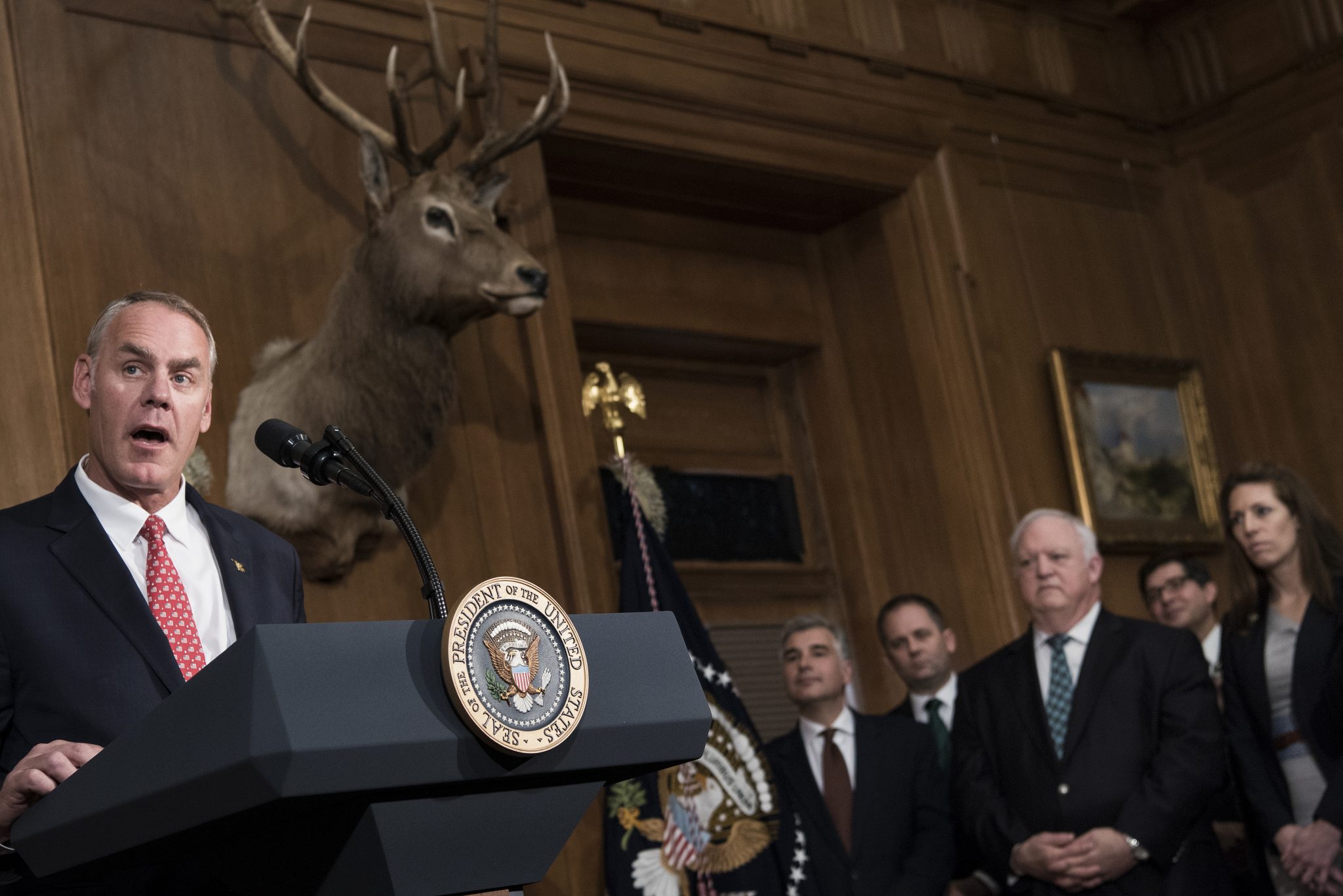
by Jerome CARTILLIER
Agence France-Presse
WASHINGTON, United States – After moving to unstitch climate change rules, US President Donald Trump Wednesday opened the door to undoing the federally protected status of some of America’s vast nature preserves.
He signed an executive order reviewing decisions by predecessors Barack Obama, George W. Bush and Bill Clinton to designate public land a “national monument” under a 1906 law known as the Antiquities Act.
“Today I’m signing a new executive order to end another egregious abuse of federal power and to give that power back to the states and to the people where it belongs,” Trump said at the signing ceremony.
He singled out Obama for using the monument designation to assert federal control over 265 million acres (107 million hectares), including maritime zones, particularly in the Pacific.
“That’s larger than the entire state of Texas,” Trump complained.
“The antiquities act does not give the federal government unlimited power to lock up millions of acres of land and water, and it’s time we ended this abusive practice,” he said.
Rollback?
Interior Secretary Ryan Zinke said the outcome of the review was not pre-ordained. His department is to provide an interim report in 45 days, then a fuller one in 120 days.
But it conceivably could roll back protections fixed under the Antiquities Act — brought in under president Theodore Roosevelt, keen on conserving America’s natural heritage — and set the scene for fierce legal challenges.
“National monument” land has come to be synonymous over the years with a bar to drilling for fossil fuels on public land, or other commercial activities.
While Republicans in Utah and other states are keen to lift protections they see as too expansive and undermining economic opportunities, environmental groups and Native Americans are deeply opposed.
In the past, areas that presidents have tagged as “national monuments” were later transformed by Congress into full-fledged National Parks — the Grand Canyon and Death Valley among them.
Since the Act came into force more than a century ago, only three presidents — all Republicans — did not use its powers: Richard Nixon, Ronald Reagan, and George H.W. Bush.
Under Trump’s review, only “monuments” of 100,000 acres (40,000 hectares) or more will be examined.
A key area will be the Bears Ears National Monument, a 1.3-million-acre (530,000-hectare) zone in Utah Obama proclaimed in 2016.
Another will be the Grand Staircase-Escalante National Monument also in Utah — a spectacular tract of canyons, ridges and a river — designated by Clinton in 1996.
The Republican senator for Utah, Orrin Hatch, has railed against the national monument decisions made in Washington, saying his state should have more say over how the land is protected.
In a Washington Post opinion piece, Hatch said Obama “ignored the best interests of Utah and cast aside the will of the people — all in favor of a unilateral approach meant to satisfy the demands of far-left interest groups.”
Other presidents, too, went too far, Hatch said, adding that Trump “stands ready to undo the harm brought about by their overreach.”







